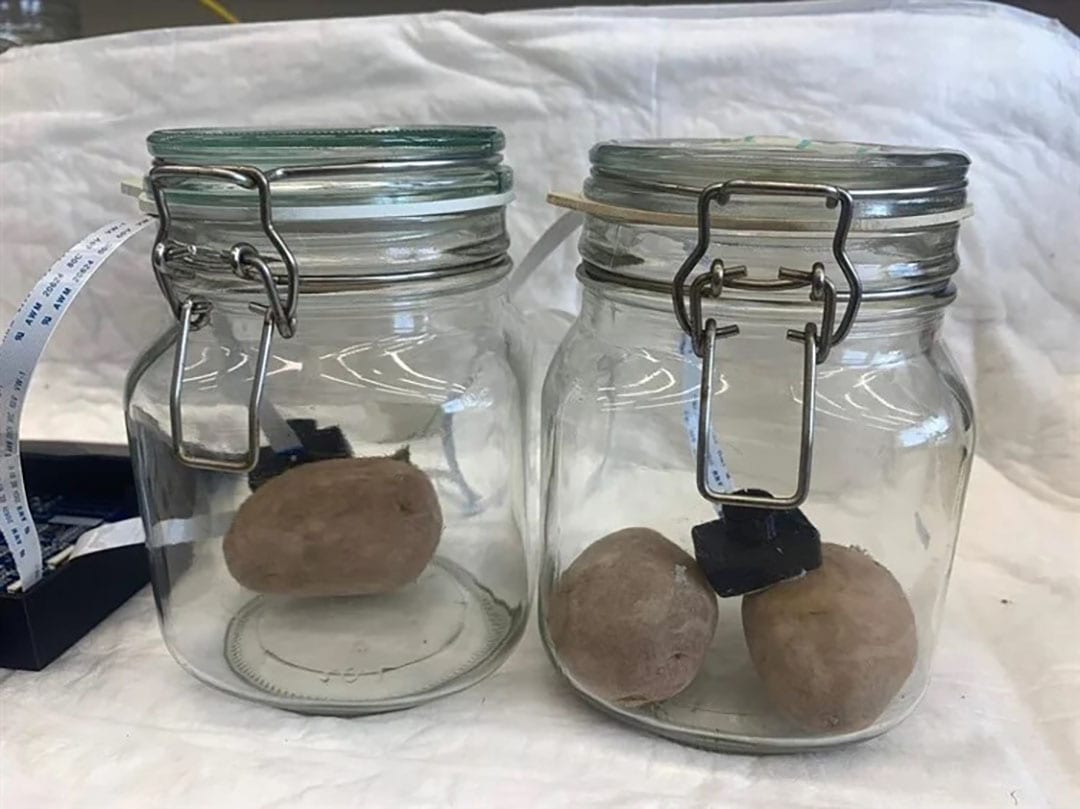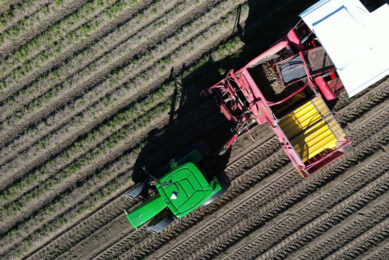Biosensor detects hidden rot in potatoes

Researchers have developed a sensor that detects rot in potatoes and inhibits the disease from growing and spreading to other plants.
New research study led by the Hebrew University of Jerusalem (HU) and the Israel’s Agricultural Research Organization (Volcani Institute) details the success of a biological sensor for early detection of hidden disease in potato tubers, one of Israel’s chief export industries at 700,000 tons a year.
Bioengineering and optics
The sensor relies on smart bioengineering and optics. When the sensor is exposed to an infected potato, a bacterial compound within lights up – with the strength of the luminescence indicating the concentration and composition of the rot.
Reading tip: HarvestEye measures size and count of potatoes during harvest
“The intensity of the light given off by the bacteria panel makes it possible to quickly and quantifiably analyze the characteristics of the disease, which the sensor can ‘smell,’ before the appearance of visible symptoms,” explained Dr. Evgeni Eltzov of the Volcani Institute.
Text continues below image

“The biosensor we developed will help identify diseased potatoes that do not yet have any external indications, and keep them away from healthy tubers, thus preventing the rot from developing or spreading to other healthy plants,” Dr. Dorin Harpaz (HU’s Faculty of Agriculture) added.
To form the bacteria panel, the team created a compound of four genetically-engineered bacteria that measure biological toxicity. In this study, the biological sensor detected disease before there was any visible trace, and caused the optical sensor to shine twice as brightly as did the sensors in non-infected potatoes. Their capabilities were also demonstrated in a previous study that used the sensors to detect toxicity among artificial sweeteners in sport supplements.
Quickly and economically identify hidden rot in potatoes
According to the researchers, early discovery of disease – before the potatoes are exported to foreign markets or replanted, offers a significant advantage to food growers. “The biological sensor can be used to quickly and economically identify hidden rot in potatoes, facilitate better post-harvest management, and reduce food wastage – particularly important given the current global food crisis,” concluded Harpaz.
Join 17,000+ subscribers
Subscribe to our newsletter to stay updated about all the need-to-know content in the agricultural sector, two times a week.



